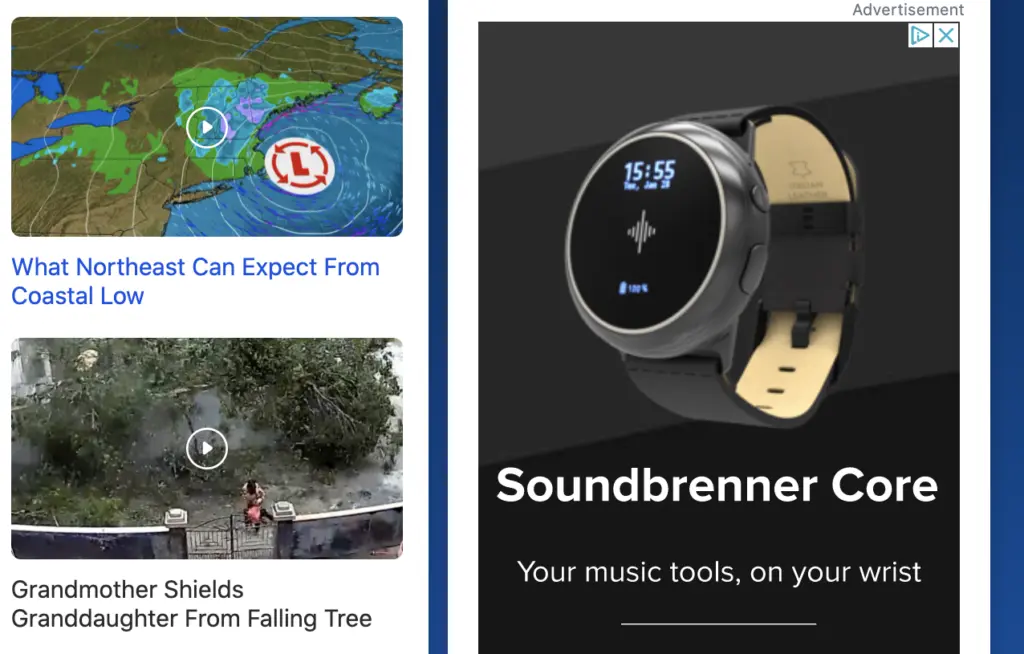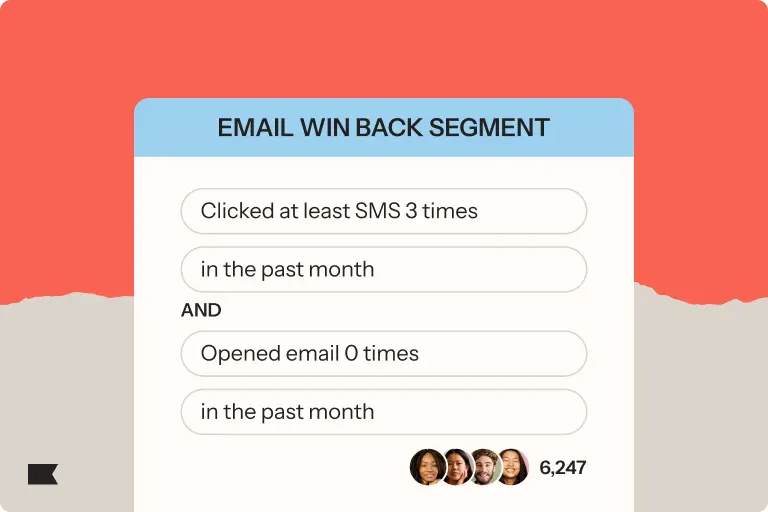Retargeting and remarketing: Email & ads to personalize communications

One of the most efficient paid advertisement strategies is retargeting. It is effective because it is highly segmented and targets a set of users that has already shown interest in your website. Since they have visited the website or landing pages, they are now in the consideration stage which makes a personalized strategy easier and more effective.
So the question isn’t, “How do I get shoppers to buy my products on their first visit?” but rather, “How can I get past visitors to return to my website and eventually make a purchase?”
And email retargeting is your answer.
What is retargeting in marketing?
Retargeting is a form of digital advertising that shows your brand’s paid ads to anonymous shoppers who have visited your website or people whose contact information you’ve already acquired (i.e., customers or subscribers to your content).
Think back to the last time you were on a brand’s website. After browsing some products and leaving, did you notice that images of the products you were looking at (or similar ones) appeared on other websites you visited or on your social media feeds?
If so, you’ve been retargeted.
The product images that you saw were paid ads, or advertisements that a brand gets charged per click for.
You can run retargeting campaigns through providers like Google Ads, Facebook, LinkedIn, and Instagram, to name a few. Each platform has their own suite of targeting and segmentation tools to ensure that your ads are getting in front of the people who your brand is most relevant to.
Ecommerce advertising and the different channels for digital marketing


I’ve recently become a dog owner and have lost count of the amount of websites related to dog products I’ve visited. Fable Pets makes a dog toy that keeps your puppy engaged for long periods of time and they retargeted me with an ad highlighting their product.
With the summer months approaching, I’ve also been browsing warm weather apparel on sites like Marine Layer.

Their paid ad is retargeting me with products very similar to the ones I was looking through on their site.
Facebook has picked up on my shopping habits as well. Here are two examples of paid advertisements that appeared on my newsfeed recently.

Are you sensing a theme? Wild One just launched a spring line of dog toys that their retargeting campaign thought I would be interested in (they were correct). Meanwhile, Charlotte Stone uses a carousel ad to show me more products related to the sandals I was considering.

Besides social media platforms, retargeting ads will also appear on other sites on the web like The Weather Channel.

I was recently conducting research on smart watches and, lo and behold, Soundbrenner used retargeting on the Google Display Network to show me a timely ad related to my search. It sparked enough curiosity that I clicked on the ad, and now the Soundbrenner watch is one of my top contenders.
How does retargeting work?
Now that you have a sense of what retargeting is, the next question you naturally may ask is, “How does retargeting work?”
In order for your retargeting campaign to be effective, you first have to gather an online audience of people to show your ads to.
There are two primary forms of collecting audience data for retargeting campaigns: Pixel-based and list-based. Each one has its own advantages based on the kind of campaign you’re running.
Retarget to your audience using a pixel on your website
Pixel-based retargeting is the most common form of collecting data from your target audience.
The first step in this type of retargeting requires the placement of a JavaScript code (the aforementioned pixel) on your website or landing page. Once you place the pixel, whenever an anonymous visitor comes to your site, it drops a cookie—the highly technical term for a small piece of data that records browsing history—on the visitor’s browser.
Once a visitor leaves your site, the cookie on the shopper’s browser transmits data back to your pixel and alerts providers like Google or Facebook to start showing your ads to them.
The pixel is like a private detective—it monitors someone’s activity and then reports its findings back to the original source.
Retarget to your audience using a list to fuel your email strategy
List-based retargeting is fueled by the existing contact information your brand already owns from either subscribers or customers.
You can use list-based retargting by uploading a contact list to a retargeting campaign (usually on social platforms like Facebook, Instagram, or Twitter). Once uploaded, the platform scans your contact list and then cross-checks it against users on the platform.
These platforms would only serve retargeted ads to people whose email addresses match the ones on your list.
Since it’s not solely based on behavior, list-based retargeting allows you to implement stricter criteria around who might see your ads.
Use a lookalike audience builder to retarget your visitors
Retargeting vs remarketing
Have you ever used the terms retargeting and remarketing interchangeably? If so, you’re not alone.
For two terms that seem so similar on the surface, it’s easy to fall into the trap of assuming retargeting and remarketing are essentially the same processes—I speak from experience.
The fact that they’re both used to achieve the same goals—increase brand awareness, drive consumer engagement, and target new potential customers—certainly adds to the confusion.
But what actually separates retargeting from remarketing is how each strategy goes about accomplishing those goals.
Retargeting tries to engage shoppers who have visited your website or social media profiles using paid or sponsored ads. Generally, you collect information on your audience via a pixel or a list.
Retargeting can help potential customers become better acquainted with your products or services. If shoppers repeatedly see your ads on other websites or social media platforms, then it can ensure your brand stays top-of-mind for them.
Remarketing uses your owned channels, like email or SMS, to communicate with past-purchasers or people who have subscribed to your brand’s content to boost sales or conversion rates. You can collect subscriber information through signup forms on your site, through the checkout process, or in your transactional emails.
Think of remarketing as re-engaging: You’re either trying to coax shoppers who have purchased from your brand in the past back to your online store, or you’re trying to re-ignite the interest of shoppers who are familiar with your brand but who haven’t committed to making a purchase.
Examples of remarketing campaigns include email series like anniversary emails, cart abandonment emails, or win-back emails.
What is email retargeting?
Did you know that you can apply the principle of retargeting to your email marketing strategy and drive results?
Email retargeting can be a very effective tactic to encourage your audience to take the next step in their journey with your brand. With proper planing and execution, email retargeting campaigns can support marketing goals like increasing conversions or even growing your following.
Some examples of email retargeting campaigns include:
- Abandoned cart email reminders
- Anniversary emails to build customer loyalty
- Win-back emails to re-kindle relationships
- Cross-sell and upsell complementary products
- Growing your social media following
By personalizing emails in this way, your brand can resonate and build stronger relationships with your community.
Examples of remarketing campaigns include email series like anniversary emails, shopping cart abandonment emails, or win-back emails.
Set up your email retargeting through an automation platform
It’s best to apply retargeting across marketing channels
There isn’t a single solution for marketing success. There are a variety of tactics that play a role in crafting a robust marketing strategy that builds brand awareness and drives sales.
Retargeting is a strategy that you can use to engage with your target audience and keep interest around your products high, but it’s not the only one you should be using to showcase your brand’s products.
When you use retargeting in tandem with the rest of your marketing channels—email, SMS, content creation, lead acquisition, etc.��—you can create moments of delight for your customers on every stage of their journey with your brand.
Want to implement strategic retargeting campaigns? Learn more about customer lifecycle marketing to gauge where retargeting would be most impactful!
Email Retargeting FAQs
What are the benefits of email retargeting?
When email retargeting is done right, it is a tactic that can speak specifically to a moment in a buyer’s journey with your brand. By sending the right message to the right person at the right time, brands can drive revenue, build relationships, and even gain more insights on how to improve their service and offerings.
How do I get started with email retargeting?
To use email retargeting, you’ll need to have an email list of addresses for people who have interacted with your brand in some way. You’ll also need an email marketing platform that allows you to create audience segments and personalized emails. Look at email templates, examples of emails (like special offer emails, new product launches, and abandoned cart emails) to match your retargeting efforts with your goals.
What are some email retargeting best practices?
There are several things that you can do to make sure that your email retargeting works well. Some best practices for email retargeting strategies include:
- Segmenting your audience based on demographics such as behavior or interests
- Sending personalized follow-up messages that are relevant to each individual
- Using clear and compelling subject lines to encourage website visitors to open your emails
- Including clear CTAs that encourage people to take a desired action
- A/B testing and optimization of your emails to improve performance over time
- Use email marketing automation to send emails based on triggers, such as abandoned carts or website behavior

Related content

Discover the best email marketing platform for ecommerce in 2026. Compare top tools for data, automation, personalization, and deliverability.

Learn how to use Klaviyo SMS, segmentation, and hybrid flows to re-engage lapsed email subscribers, boost deliverability, and drive higher retention.

Boost D2C email revenue from 12% to 30% with the Klaviyo playbook: high-converting pop-ups, a 5-email welcome series, smart filters, and optimized abandonment flows.